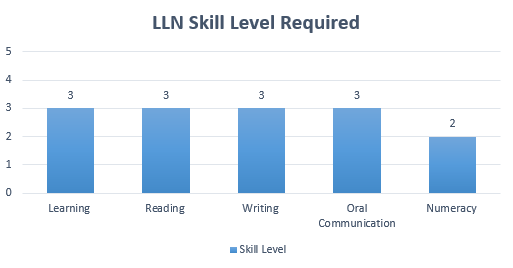Construction Site Safety
When it comes to working on a construction site, there are many different tasks and roles available. There can also be hazards and it’s important to familiarise yourself with construction site safety before beginning a job in the industry.
In today’s article, we take a look at the importance of construction site safety, along with some of the hazards you may encounter at different worksites, and the steps for proper training and knowledge.
Why is safety important on a construction site?
Like many things in life, working on a construction site is not without potential risks. Accidents can happen and it’s important to make sure workers are aware of the dangers they might face when working on a site. Being aware of the risks will help form good habits, such as wearing appropriate clothing or using tools correctly. Risk awareness can also help workers to identify potential hazards and avoid injury or worse. Formulating and enforcing a site safety management plan and ensuring all workers are properly trained are two ways to create a knowledgeable and safe environment.
Potential construction site hazards
Construction site hazards will vary depending on the type of construction site you are on. For example, hazards for a skyscraper build will generally be different to the hazards for a single-story home build. Some hazards that may be encountered while working on a construction site include:
- Fall risks and falling objects (including debris)
- Crushing and injury from machinery
- Damage to skin or eyes
- Lifting risks (including insufficient training on equipment)
- Slipping and tripping over
- Chemical spills
- Exposure to harsh weather conditions (including hot, cold, windy and wet weather)
Types of construction sites
There are many different types of construction sites, each with their own set of hazards. It’s important to be aware of the potential risks when working on a site, and to avoid acting in a way that might result in injury or worse:
Single-story home or building
A single-story site may be a house or commercial building and can have hazards such as:
- Exposure to harsh weather conditions
- Falling objects due to lack of safety barriers
- Lifting risks (including insufficient training on machinery)
- Slipping and tripping
Tall buildings or skyscrapers
A tall building site may include hazards such as:
- Crushing and injury from machinery
- Falling objects due to lack of safety barriers
- Exposure to harsh weather conditions
- Lifting risks (including insufficient training on machinery)
- Cranes or other heavy machinery
- Falls risks
- Slipping and tripping
Earthworks
An earthworks site may include hazards such as:
- Exposure to harsh weather conditions
- Lifting risks (including insufficient training on machinery)
- Slipping and tripping over excavation holes
- Chemical spills
- Falls risks
- Cranes or other heavy machinery
- Crushing and injury from machinery
- Sloping or unstable ground
- Exposure to falling objects (including debris)
Who is responsible for construction site safety?
It’s important to realise that the responsibility for on-site safety is the responsibility of all parties involved. Everyone on the worksite should stay vigilant and report any safety hazards to the appropriate persons. Site managers are generally responsible for the safety of all workers on-site. Site inspectors are also required to ensure that industry standards are being adhered to.
White Card training
In Australia, holding a valid White Card is mandatory when working on a construction site. You must successfully complete a White Card course before beginning work on a construction site. Express Online Training is a fully-accredited Registered Training Organisation providing White Card courses for all states and territories across Australia. We provide 7-day locally-based support, along with a price beat guarantee for if you find the same course cheaper elsewhere.
First aid training
Having workers who are trained in administering first aid is essential and could end up saving lives. You will also be required to have a minimum number of first aid kits available on site. First aid requirements will generally differ depending on the state or territory you are working in, so it’s important to check these requirements if you’re unsure. If you want to become more knowledgeable on first aid, you may like to consider completing a first aid course.
The importance of PPE and site safety equipment
Personal protective equipment (PPE) is any clothing or tools that can be used to protect you from potential hazards. These can include safety glasses, steel caps, gloves and hard hats. Construction sites are also often equipped with a wide range of safety equipment including:
- Fire extinguishers
- Rescue equipment (including first aid kits)
- Scaffolding systems, ladders and harnesses
- Safety signage
- Water supply
- Lighting
- Ear protection and safety mats
Site safety rules
Each site will have its own set of site safety rules. These rules should be clearly displayed on-site and understood by workers. It’s important to abide by the safety rules at all times, as this will help create the best possible worksite safety.
Construction site safety is vitally important for all worksites within the industry. Taking the time to become informed on potential risks and hazards can help you avoid serious injury on a construction site, while following safety precautions helps to reduce the risks involved in working on a construction site.



